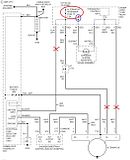Wiring 3-way switches can seem like a daunting task, but with the right knowledge and guidance, you can easily tackle this electrical project. In this article, we will provide you with a step-by-step guide on how to wire 3-way switches on a wiring diagram. Whether you're a seasoned DIY enthusiast or a beginner, this guide will equip you with the necessary information to successfully wire 3-way switches in your home.
The Importance of Wiring Diagrams
Before we dive into the specifics of wiring 3-way switches, let's first understand the significance of wiring diagrams. Wiring diagrams are essential tools that depict the electrical connections in a clear and visual manner. They provide a roadmap for understanding the circuit and enable you to identify the necessary components and connections required for a successful wiring project.
How to Wire 3-Way Switches on a Wiring Diagram
Now that we understand the importance of wiring diagrams, let's explore the step-by-step process of wiring 3-way switches using a wiring diagram. Follow these instructions carefully to ensure a safe and effective wiring installation.
Step 1: Gather the Necessary Tools and Materials
Before you begin the wiring process, gather the following tools and materials:
- Screwdrivers (Phillips and flathead)
- Wire cutters
- Wire strippers
- Electrical tape
- Wire nuts
- 14/3 or 12/3 electrical wire (depending on the circuit ampacity)
Step 2: Turn Off the Power
Safety should always be your top priority when working with electricity. Begin by turning off the power to the circuit you'll be working on. Locate the circuit breaker in your electrical panel and switch it off. Use a voltage tester to ensure that the power is truly off before proceeding.
Step 3: Identify the Wiring Diagram
Retrieve the wiring diagram specific to your 3-way switch configuration. This diagram will illustrate the connections and wire colors necessary for a successful installation. Make sure to refer to the correct diagram to avoid any confusion.
Step 4: Connect the Ground Wires
Start by connecting the bare copper or green ground wires together using a wire nut. Ensure a secure connection, as the ground wires are crucial for safety.
Step 5: Install the Switches
Mount the 3-way switches in their designated locations. Typically, one switch is located at the starting point of the circuit (usually near the entrance), while the other switch is at the endpoint (near the exit). Follow the manufacturer's instructions for proper switch installation.
Step 6: Connect the Traveler Wires
Identify the traveler wires according to the wiring diagram. These wires are typically colored differently from the common and ground wires. Connect one traveler wire to the screw terminal labeled "traveler" on each switch. Remember to tighten the screws securely to ensure proper contact.
Step 7: Wire the Common Wire
Locate the common wire, which is typically colored differently from the traveler wires. Connect one end of the common wire to the screw terminal labeled "common" on the first switch. Then, connect the other end of the common wire to the screw terminal labeled "common" on the second switch.
Step 8: Complete the Circuit
Lastly, connect the remaining traveler wire to the screw terminal labeled "traveler" on the second switch. Double-check all connections to ensure they are tight and secure.
FAQs about Wiring 3-Way Switches
1. Can I use a regular switch instead of a 3-way switch?
No, you cannot substitute a regular switch for a 3-way switch. 3-way switches are specifically designed for controlling a light or fixture from two different locations.
2. Are there different types of 3-way switches?
Yes, there are a few variations of 3-way switches available, such as single-pole dimmer switches and smart switches. Make sure to choose the appropriate type based on your specific requirements.
3. What is the purpose of the traveler wires?
Traveler wires carry the electrical current between the two 3-way switches. They allow the switches to communicate and control the light or fixture.
4. Can I use different wire gauges for the 3-way switch wiring?
It is essential to use the correct wire gauge for your circuit. Typically, 14/3 or 12/3 electrical wire is used for 3-way switch wiring, depending on the circuit ampacity.
5. How do I troubleshoot a 3-way switch wiring issue?
If you encounter problems with your 3-way switch wiring, start by checking the connections and ensuring they are secure. Also, verify that you have followed the wiring diagram correctly. If the issue persists, consult a qualified electrician for assistance.
6. Is it necessary to hire a professional for wiring 3-way switches?
While wiring 3-way switches can be done as a DIY project, it is crucial to have a basic understanding of electrical work and safety. If you are uncertain or uncomfortable working with electricity, it is best to hire a licensed electrician to ensure a safe and reliable installation.
Conclusion
Wiring 3-way switches may initially seem complex, but by following a wiring diagram and taking the necessary safety precautions, you can successfully complete this electrical project. Remember to gather the right tools, turn off the power, and carefully connect the wires as indicated in the wiring diagram. By doing so, you'll have a functional and efficient 3-way switch system that allows you to control your lights or fixtures from multiple locations.







